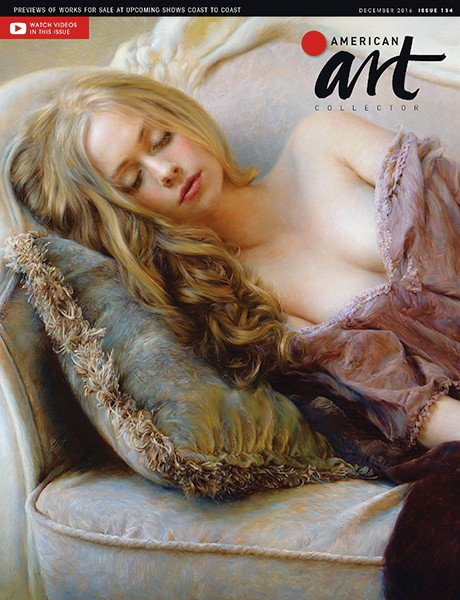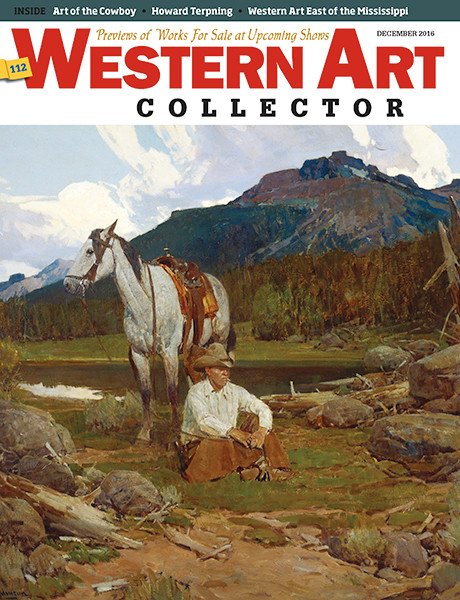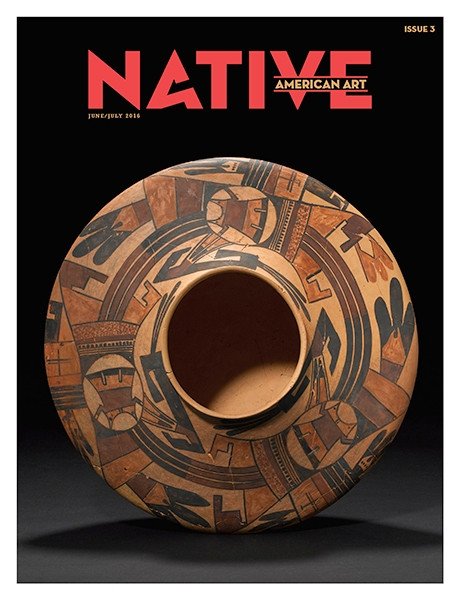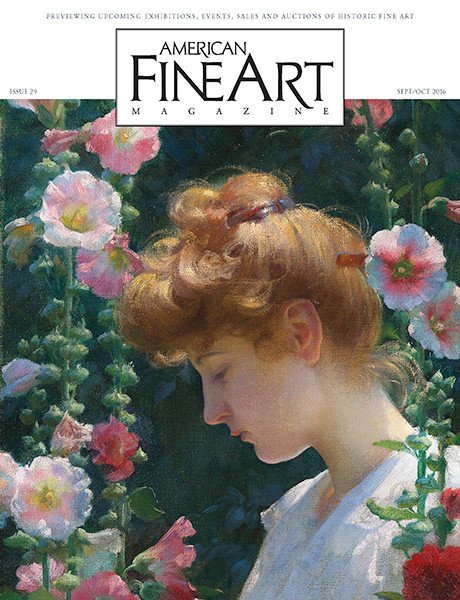Grand Prize is a four-page editorial feature in American Art Collector magazine
 Chinese Tea Table 2, fabric surface, oil on canvas, Xuan paper and quartz sand, 43 1/3 x 35½” (110 x 90 cm)
Chinese Tea Table 2, fabric surface, oil on canvas, Xuan paper and quartz sand, 43 1/3 x 35½” (110 x 90 cm)Wanning Liao
Ontario, Canada
Soft and Subdued
Born and trained in China, Wanning Liao’s art career took off in 2008 with her debut solo exhibition in Hong Kong, which marked the beginning of her recognition in the art world. Known for merging tradition with contemporary narratives, Liao’s artwork is grounded in realism with hints of abstraction blended in, as seen in works like her recent Back to Canaan 1 and Back to Canaan 2, as well as in her winning piece Chinese Tea Table 2, fabric surface.
“I often pay attention to the living conditions of people all over the world,” Liao says of Back to Canaan 1 and Back to Canaan 2, each depicting a young girl as the subject. “Children in some underdeveloped countries, especially girls, carry a heavy burden of family. [They] face the burden of not going to school from an early age, and in order to survive, they do unimaginable heavy labor from an early age.”
Working with a soft, subdued color palette, there is a sense of delicate emotion to her paintings, which encompass everything from people to still lifes to animals and more. Liao is a member of the Portrait Society of America and the Society of Canadian Artists. Her work has been shown in exhibitions across the world, and she has garnered numerous awards and accolades. “Painting has great potential to record the process of human thought, change and the development process of aesthetic iteration,” says the artist.
My Inspiration
A large collection of my paintings are related to my childhood memories. However, in terms of painting style, I have always focused on the neoclassical figurative realistic style, using only canvas and oil paints. After 2017, I wanted to use a new method to draw the theme of old antiques. I decided to try using quartz sand and oil paint to paint the textural effect of antiques and rough walls. After much practice, I was finally successful. I believe that artwork is an extension of culture. From my works, it is not difficult to see the passage of time, which reflects everything our generation has experienced. No matter what stage that social progress and development has reached, the former spirit will be engraved in everyone’s heart.
My Design Strategy
After the above attempt, I consciously weaken the real shape and color of the painted object, and the picture will show the unique gray tone of different lightness. After weakening the body, the color block rhythm also becomes very interesting. Tea is not only a popular drink in China but also a unique cultural tradition, which we call “tea culture.” I want to draw a picture of the Chinese tea table that I am most familiar with and love. I want to express the appearance of Chinese ink painting with oil painting and propylene media, so as to make some effective new attempts. Chinese tea table group painting is the expression of Chinese humanistic interest, which is different from the ancient literati painting, and also resembles literati painting. Throughout the Chinese landscape painting tradition, the ancients can borrow things to express their feelings of the landscape. The most common schema in Chinese painting are a mountain, a water (waterfall), a person (a hermit), a piano, a pot (wine), a boy. It is the aesthetic idea of sending one’s feelings through the scenery.
My Working Process
I started by soaking Chinese paper in water and white latex to create a convex effect, then used acrylic paint mixed with white latex quartz sand. After the surface dried about a day later, I mixed water and white latex with warm gray propylene paint using an uneven brush on the underlying base, waiting another day for it to dry. For the first layer, I used acrylic paint to spread the tone while the painting is still dry. After that, I began to add details with oil paint that didn’t have any oil medium using a large brush and palette knife. This presents the effect of color superposition. Because there is no oil medium, the painting has a completely matte effect. The surface is also hard and suitable for viewing in any light, so you do not have to worry about the matte effect being compromised by reflections in the oil.
Contact Details
Email: liaolin1030@gmail.com
Second Prize is a two-page editorial feature in American Art Collector magazine
 Ziyafat e Baji, oil, 391/3 x 391/3” (100 x 100 cm)
Ziyafat e Baji, oil, 391/3 x 391/3” (100 x 100 cm) Nasim Akhlaghi Garmjani
Tehran, Iran
My Inspiration
I’ve always appreciated the softness and delicacy found in natural elements, like flowers and fruits. Therefore, I’ve used these symbols of beauty and gentleness in my arrangement, aiming to capture a fragment of this immense beauty. Additionally, my fondness for nostalgic items, which carry a sense of the past and memories, influenced my choice of subjects. I also wanted to illustrate the presence of a woman, tastefully and calmly arranging a table in a quiet corner of her solitude. This table was thoughtfully prepared by “Baji,” the heroine of our story, embodying femininity at its peak. The image reflects a table arranged with utmost femininity by Baji, our story’s protagonist.
My Design Strategy
In the arrangement, I used colorful flowers and fruits to create a rotation of colors. Having multiple subjects with diverse textures and materials posed a compositional challenge, thus achieving harmony required careful balancing. Due to the variety of desired elements, I chose a square frame that conveys a greater sense of simplicity, tranquility and security to the viewer. To unify the subjects, I chose to include fabric and a lace tablecloth. Finally, by utilizing light and shadow play, I enhanced the vibrancy of colors throughout the piece to heighten its overall impact.
My Working Process
In creating my artwork, I applied glazing and scumbling techniques extensively, building up to eight thin layers in some areas to achieve my desired transparency and luminosity. The diversity of textures made this piece particularly challenging and time-consuming. For the detailed lace tablecloth, I moved from general to specific, highlighting softness and delicacy through meticulous attention to shadow and light. Portraying the tableware required precision due to high contrasts in closely adjacent areas, demanding careful blending to accurately depict each object’s essence. Overall, due to the hyperrealistic approach, the entire painting required significant time and attention to detail.
Contact Details
Email: nasim.akhlaghi556@gmail.com
Website: instagram.com/nasim.akhlaghi.art
Third Prize is a one-page editorial feature in American Art Collector magazine
 Antique French Jug with Green Apples, oil on linen, 19½ x 26” (50 x 66 cm)
Antique French Jug with Green Apples, oil on linen, 19½ x 26” (50 x 66 cm)Vicki Sullivan
Victoria, Australia
My Inspiration
The elegant curves and subtle shadows of the antique French country jug immediately caught my eye, its form begging to be painted. Wanting a composition that felt simple yet balanced, I paired it with golden apples—their warm tones contrasting beautifully against the jug’s soft whites. To lead into the scene, I added a French linen cloth, its gentle folds guiding the eye and enhancing the sense of harmony. The interplay of light, shadow and texture made for an inviting still life, celebrating the quiet beauty of everyday objects.
My Design Strategy
I used a neutral gray background and table cloth to emphasize the true focal points. The white cloth was carefully grouped with the white jug for harmony, while the golden apples were arranged in a visually pleasing composition. I spent considerable time experimenting with different setups before settling on the final arrangement, ensuring balance and interest before beginning to paint.
My Working Process
I start by setting anchor points for sight-size painting, then sketch the composition in raw umber with a bristle brush—accurate but loose. Next, I apply an underpainting, beginning with the shadow color of each object. The painting is then built up in layers over several weeks.
Contact Details
Email: vicki.sullivan42@gmail.com
Website: vickisullivan.com
Finalists
Each receives an Award Certificate and a one-year subscription to International Artist magazine PLUS having their work seen worldwide by international galleries looking for new talent.
 Resting Place of Roles, oil, 14 x 18" (35 x 45 cm)
Resting Place of Roles, oil, 14 x 18" (35 x 45 cm)Timothy Jahn
New Jersey, USA
My Inspiration
Resting Place of Roles evokes a vintage curiosity, reminiscent of a child’s first exploration of new spaces. This 14-by-18” painting, part of my interior series, captures the quiet magic of a theater storeroom. A green chair stands patiently, awaiting dancers and performers—like my wife, a dancer and choreographer—pausing to reflect on their journey through countless roles. Visiting theaters and performance halls with her has gifted me a peek behind the curtain, revealing hidden worlds of creativity. In this stillness, every object—from worn props to forgotten corners—whispers stories of imagination and dedication.
My Design Strategy
When designing a painting, I start by imagining a feeling or sensation I’d like viewers to experience, knowing I can’t fully control their interpretation. My best work flows from this initial spark. Next, I focus sharply on the primary focal point, making it the star of the piece. This clarity guides every subsequent decision effortlessly. For scenes with depth, I use atmospheric perspective and soften details in the background to enhance the illusion of space. This technique ensures my focal points sit naturally within the composition, drawing viewers in with ease.
My Working Process
I work in a three-step process. The first stage is the basic drawing stage, where I establish the scale and contour of the objects, placing them appropriately in perspective. Once I feel confident in my drawing, I start my Ébauche, or “first pass,” a painting technique that uses thin colors to outline the main forms of the composition. The third stage involves fully resolving the objects and the atmosphere surrounding them, developing the primary focal point first, followed by subsequent focal points in order of importance and finishing with the background.
Contact Details
Email: timothywjahn@gmail.com
Website: timothywjahn.com
 Roses in a Jar, oil, 20½ x 17½” (52 x 44 cm)
Roses in a Jar, oil, 20½ x 17½” (52 x 44 cm)Pritha Bhadra
Singapore
My Inspiration
My creative journey starts with a moment of connection—something that catches my eye and resonates with me, whether it’s a still life, a person’s expression or a scene in nature. I find beauty and emotion in these moments, and they spark my inspiration. I also draw deep inspiration from great artists like William-Adolphe Bouguereau, Caravaggio and Henri Fantin-Latour. Their ability to tell stories through expressive brushwork and masterful use of color captivates me, and their timeless works continue to guide and influence my artistic path.
My Design Strategy
When designing a still life, I focus on capturing a feeling or story. I carefully choose objects that resonate with me, arranging them for balance and harmony. Light plays a key role; I love the drama of strong shadows or the softness of diffused light. For this piece, I selected fresh roses from the market, placed them in a jar and painted them from life, setting the light to fall from one direction to highlight their beauty.
My Working Process
For most of my paintings, I usually prefer working from life. For this painting, I started by setting up the composition on a table. After that, I did some quick sketches to get a feel for the palette before moving on to the actual painting. I prefer high quality surfaces like linen or wood and used portrait-grade linen canvas for this painting. I usually work using the indirect painting method, and I followed the same approach for this piece. I built up the painting in two layers over around three days, capturing the roses while they were still fresh.
Contact Details
Email: prithaartworks@gmail.com
Website: prithaartworks.com
 Bittersweet in Bowl, oil, 30 x 40” (76 x 101 cm)
Bittersweet in Bowl, oil, 30 x 40” (76 x 101 cm)Loren DiBenedetto
North Carolina, USA
My Inspiration
My inspiration for this painting was this yellow enameled bowl. I found this piece and loved everything about it. I just knew I had to paint it. Bittersweet was the perfect companion, picking up all of those warm colors and also added a wonderful texture to the piece. Placing it on the old plank box just contributes to the feeling of nostalgia.
My Design Strategy
My design strategy is always to fill the canvas with a simple but dynamic composition. The branches of bittersweet help to move the eye around the canvas, and the yellow bowl gives weight to the design.
My Working Process
Upon finding a subject I would like to paint, I set up a still life in natural sunlight and take numerous reference photos. After deciding on the best composition, I then start with a toned canvas and block in the entire piece. After letting that dry, I then proceed to paint layer by layer until the desired look is achieved, allowing the painting to dry between each layer.
Contact Details
Email: lorendibenedetto@gmail.com
Website: lorendibenedetto.com
 Costa’s Hummingbird & Buena Mulatas, oil, 12 x 6” (30 x 15 cm)
Costa’s Hummingbird & Buena Mulatas, oil, 12 x 6” (30 x 15 cm)Rebecca Korth
Wisconsin, USA
My Inspiration
Much of my inspiration comes from my father’s garden. He grows numerous varieties of hot peppers, and the buena mulatas are a favorite of mine to paint. In fact, last summer he grew extra plants just so I had plenty to choose from. I then decided to contain all this heat in a beautiful glass because of its slight purple hue. I continued the color scheme with a costa’s hummingbird precariously perched on the pepper’s stem.
My Design Strategy
The lighting in my work is of high importance, as I prefer a simple composition in which the interest comes from color, reflections, highlights and shadows, keeping your eye moving through the piece without having to cram in a slew of different objects. A bird is then thoughtfully placed within my still life to honor my late mother. Some of my last memories with her include chatting and watching the birds outside her bay window.
My Working Process
Much of what I paint I inherited or found in antique stores. I take a few days to photograph different set-ups along with whatever fruit or vegetables are in season at the time. I then sketch my ideas onto panels and begin painting. Usually I start with the objects, then the background, and finally the bird. However, if I want to include some softer edges I will use the wet-on-wet technique.
Contact Details
Email: rebeccakorth@ymail.com
Website: rebeccakorth.com
 Electrical 101, oil, 14 x 18” (35 x 45 cm)
Electrical 101, oil, 14 x 18” (35 x 45 cm)Noriko Fox
Massachusetts, USA
My Inspiration
I’ve used light fixtures for still life subjects several times in my past work. Lanterns and lamps are good items to express thoughts like hope, warmth and searching. I have family members working in the trades, which requires deep electrical knowledge, and they enjoy their jobs. It raised my interest in taking an adult evening course titled “Introduction to Electrical.” Now I know a little more about changing light bulbs.
My Design Strategy
When I used LED string garlands and candle lights as references, they provided only dim lights, so I had to adjust the light value up in the paintings. For this scene, I used bright light bulbs, reducing the difficulty of painting in darkness. But it ended up causing a lot of white dots in my vision and was too bright to look at.
My Working Process
Electrical 101 is an expression of the struggle with learning something that I’m not good at, but enjoyable after you learn it. I continued to adjust the lighting in the bulbs and refine my painting until it felt just right.
Contact Details
Email: jnsfox@msn.com
Website: instagram.com/artsy_noriko



